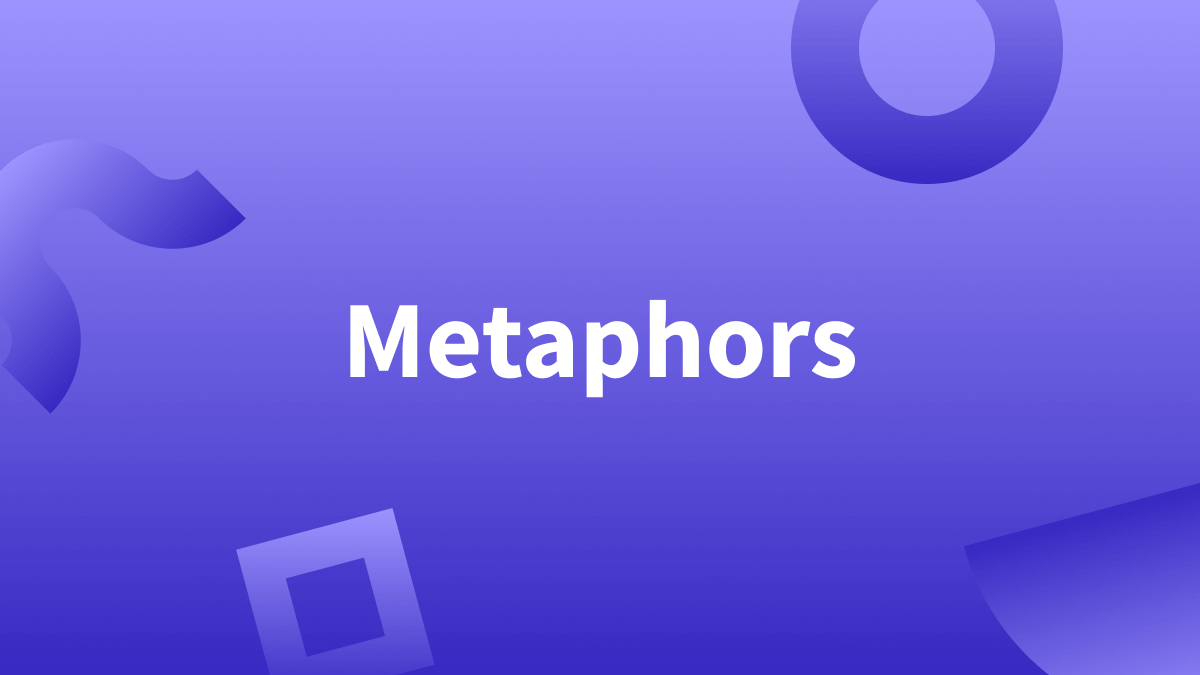Currently Empty: $0.00

Introduction
Metaphors, those captivating linguistic gems, have the remarkable ability to add depth, color, and emotion to our language. They are more than just words; they paint vivid pictures in the minds of listeners and readers, enabling them to grasp complex concepts with ease. In this article, we present an extensive metaphor list that will not only enrich your vocabulary but also spark your creativity. Whether you’re a writer aiming to amplify your prose or simply a language enthusiast, this metaphor list will undoubtedly become a valuable resource in your linguistic journey.
Table of Contents
Understanding Metaphors
Metaphors are figures of speech that involve the comparison of one thing with another, usually unrelated, thing. They create connections in our minds, making the unfamiliar seem familiar and the complex appear simple. As primary tools of communication, metaphors are used in literature, speeches, everyday conversations, and even in the world of advertising.
Why Metaphors Matter
Metaphors hold immense power to convey abstract concepts and emotions in a tangible way. They bridge the gap between the known and the unknown, helping us make sense of the world around us. By utilizing metaphors, you can transform mundane statements into captivating narratives that engage and resonate with your audience.
Exploring the Metaphor List
Here’s a curated collection of metaphors, categorized to cater to various aspects of life:
- Nature and Environment: Nature’s beauty has inspired countless metaphors. Just as the sun rises each day, your potential knows no bounds.
- Love and Relationships: Love is a journey, and every relationship has its own unique path. Like a compass guiding lost travelers, love leads the way.
- Time and Progress: Time is a river that never stops flowing. The past, present, and future are interconnected, much like the pages of a captivating novel.
- Success and Failure: Success is a staircase we climb step by step. Even failure, like a mosaic, contributes to the bigger picture of our lives.
- Emotions and Feelings: Emotions are storms that can rage within us. Just as a storm eventually clears, so do our feelings.
How to Use Metaphors Effectively
Using metaphors effectively requires an understanding of context and the emotions you want to convey. Consider your audience and the subject matter. A well-placed metaphor can illuminate your message, making it memorable and relatable.
Enhancing Communication Through Metaphors
Whether you’re giving a presentation or writing an article, metaphors can make your content more engaging. Imagine explaining a complex scientific theory by comparing it to a well-known process. Suddenly, the theory becomes accessible to everyone.
Adding Depth to Writing with Metaphors
As a writer, metaphors are your arsenal of creativity. They turn ordinary descriptions into evocative images, captivating readers and inviting them to explore the depths of your imagination.
Learning from Famous Metaphors
Some metaphors have become so ingrained in our language that we forget they are metaphors. Consider “time is money” – a simple metaphor that expresses the value of time.
Metaphors in Different Cultures
Metaphors vary across cultures, reflecting the unique experiences and perspectives of different societies. Exploring metaphors from various cultures enriches our understanding of the human experience.
Frequently Asked Questions (FAQs)
Q1: Can metaphors be overused?
A: While metaphors add flair to language, excessive use can make writing convoluted. Moderation is key to maintaining clarity.
Q2: Can I create my own metaphors?
A: Absolutely! In fact, crafting original metaphors can add a personal touch to your writing and communication.
Q3: Are metaphors only found in literature?
A: No, metaphors are everywhere – in advertisements, speeches, and everyday conversations. They help us make sense of abstract concepts.
Expand Your Knowledge
To delve even deeper into the world of metaphors, consider exploring the following resources:
- Metaphors We Live By – A thought-provoking book by George Lakoff and Mark Johnson that explores how metaphors shape our thoughts and experiences.
- The Power of Metaphors in Advertising – An insightful article on how metaphors are used effectively in advertising campaigns.
Concluding Thoughts
Metaphors are the kaleidoscope through which we view the world of language. They illuminate the ordinary, giving it extraordinary depth and meaning. With this metaphor list as your companion, you’re equipped to journey through the landscapes of language, exploring its nuances and painting vibrant pictures with your words.

